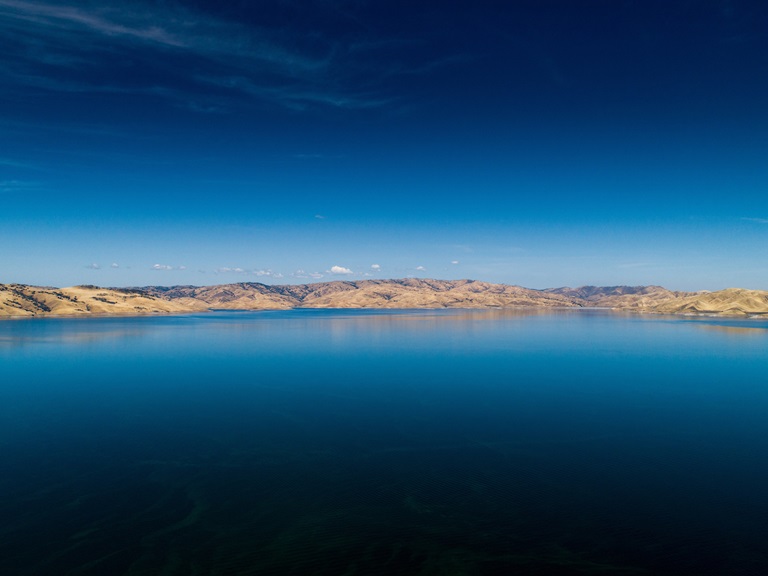Water Plan Update 2018: A Framework for a Water Resilient California
San Luis Reservoir. DWR/2019
Water plays an essential role in the daily lives of Californians, requiring careful management of our water resources. This is particularly true at a time when climate change poses considerable risks and challenges to the reliability of our water resources and systems. These risks and challenges include sea level rise, drought conditions, groundwater overdraft, widespread flooding, and unsafe drinking water.
In responding to these challenges, the water community has recognized the need to not only implement improved water management strategies statewide, but to do so regionally in a collaborative and integrated way.
The California Water Plan Update 2018 provides a vision for greater collaboration among water sectors and communities, and it presents a broad and diverse portfolio of recommended actions that target our state’s critical, systemic and institutional challenges.
Implementation of the recommended actions in Update 2018 will help inform the Water Resilience Portfolio called for in the Newsom Administration’s recent Executive Order to develop a portfolio of actions to meet the needs of California’s communities, economy, and environment through the 21st century.
Here are three key innovations presented in Update 2018 that provide a roadmap to building a climate-resilient water system in California:
Applying Societal Values to Define Intended Outcomes
Update 2018 organizes the intended outcomes that have been expressed by the water community around four categories of public benefits, or “societal values.”
- Public Health and Safety — All Californians are protected from health, safety threats, and emergencies.
- Healthy Economy — A strong, diverse economy provides satisfying ways of life and well-being, as well as opportunities for economic prosperity, for all Californians.
- Ecosystem Vitality — Ecological functions and processes that sustain ecosystems and fish and wildlife habitat are maintained and improved.
- Opportunities for Enriching Experiences — All Californians have opportunities for cultural, spiritual, recreational, and aesthetic experiences.
Prioritizing State Actions Around a Shared Vision
Update 2018 recommends 19 actions organized by six goals for sustainability to improve integrated watershed management; strengthen infrastructure resiliency; restore ecosystem functions; empower under-represented communities; improve inter-agency alignment; address regulatory challenges; and support decision-making, adaptive management, and long-term planning.
Each recommended action needs to be implemented collaboratively with public-private partnerships to leverage programs, initiatives, statutes, funding, and staffing resources. These actions will prepare California to meet long-term water resource and infrastructure management needs while adapting to climate change impacts.
Tracking Progress and Investments Toward Sustainability
Update 2018 introduces the Sustainability Outlook, an innovative tool meant to provide a well-organized and consistent approach for tracking local, regional, and State actions and investments. With this tool, water and resource managers, land use planners, and decision-makers can build capacity to adaptively make decisions and set priorities, describe how individual and collective actions have affected the management of water resources for sustainability, track return on investment, and identify data and information gaps.
To receive updates on current and future Water Plan activities and related news, subscribe to Water Plan eNews.
